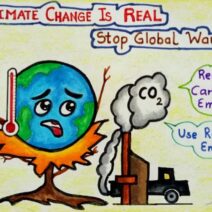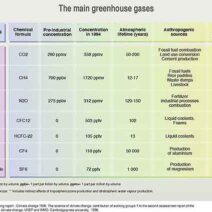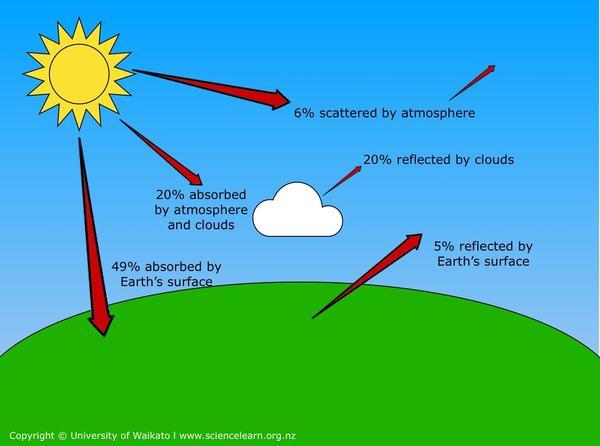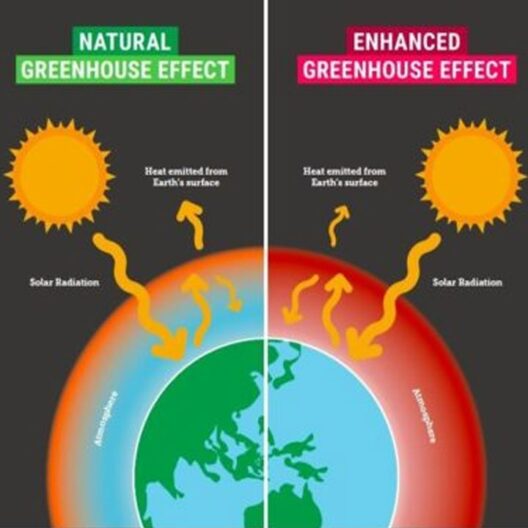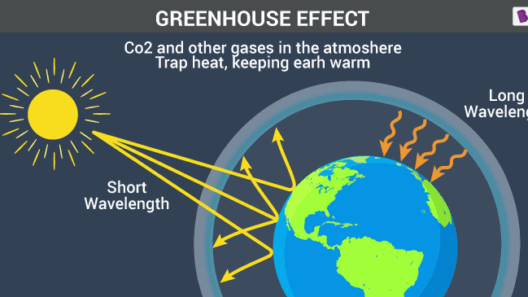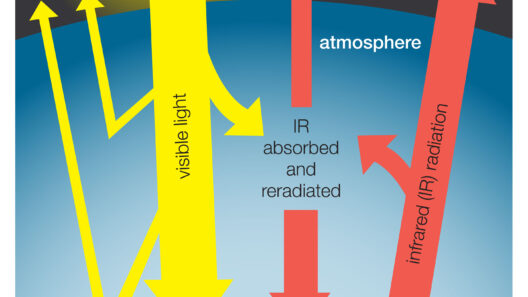Understanding the intricate dynamics of the greenhouse effect is pivotal for grasping the broader implications of climate change. This phenomenon, while naturally occurring, has profound consequences, particularly in the context of anthropogenic influences. The greenhouse effect plays a crucial role in regulating Earth’s temperature, making it habitable. However, an excess of greenhouse gases in the atmosphere can lead to overheating our planet. This article delves into the workings of this vital process, elucidating the science behind heat retention in Earth’s atmosphere.
What is the Greenhouse Effect?
At its core, the greenhouse effect describes the process by which certain gases in Earth’s atmosphere trap heat. The sun emits energy in the form of solar radiation, which reaches our planet. Some of this energy is reflected back into space, while the remainder is absorbed by the Earth’s surface, warming it. This absorbed heat then radiates back toward space in the form of infrared radiation.
Greenhouse gases, which include carbon dioxide (CO2), methane (CH4), and nitrous oxide (N2O), among others, absorb and re-radiate some of this infrared radiation. This vital function serves to maintain the planet’s temperature, ensuring it remains conducive to life. Without this natural greenhouse effect, the average temperature of the Earth would be unfathomably cold, rendering it inhospitable.
However, the balance is delicate. An increase in greenhouse gas concentrations amplifies this effect, leading to higher global temperatures—termed global warming. Understanding this balance requires delving into the specific components driving the greenhouse effect and their interactions within the atmospheric system.
Components of the Greenhouse Effect
To fully appreciate how the greenhouse effect operates, it is essential to recognize its primary elements. These components determine the efficiency of heat retention in the atmosphere.
Solar Radiation
The initiation of the greenhouse effect begins with solar radiation. The sun releases energy in various wavelengths, from ultraviolet to infrared. The Earth’s surface, comprised of land and oceans, absorbs a substantial portion of this energy. This absorption is critical, as it warms the planet and allows for the sustenance of diverse ecosystems.
Greenhouse Gases
Greenhouse gases are the pivotal players in retaining heat. Carbon dioxide, methane, nitrous oxide, and water vapor all contribute differently to the greenhouse effect. Carbon dioxide, largely from human activity such as fossil fuel combustion, is the most prevalent and plays a substantial role in long-term climate change. Methane, though less abundant, possesses a heat-trapping capability significantly greater than CO2 over a shorter time frame. Nitrous oxide, primarily originating from agricultural practices, further acerbates the situation.
Each of these gases possesses a unique molecular structure that enables them to absorb infrared radiation. This absorption is not uniform and varies according to several factors, including the gas’s concentration in the atmosphere and the time frame considered.
The Role of the Atmosphere
The Earth’s atmosphere furthers the greenhouse effect’s complexity. It comprises multiple layers, each playing a specific role in temperature modulation. The troposphere, where weather phenomena occur, is the most significant layer regarding the greenhouse effect. Here, the concentration of greenhouse gases is highest, leading to the most significant interaction with infrared radiation.
Additionally, human activities have introduced anthropogenic greenhouse gases into the atmosphere, disrupting the natural balance and exacerbating climatic shifts. Land use changes, industrial processes, and transportation are just a few examples of how our actions contribute to this rising concentration.
The Feedback Mechanisms
Climate dynamics are further complicated by feedback mechanisms. These can either amplify or dampen the greenhouse effect. One notable positive feedback loop is the melting of polar ice caps. As global temperatures rise, ice melts, reducing the Earth’s albedo—the reflective capacity of the surface. This leads to increased absorption of solar energy, further warming the planet.
On the other hand, negative feedback mechanisms, such as increased cloud cover, can mitigate some warming by reflecting sunlight back into space. However, their efficacy is still under debate among scientists, and often their impacts can be unpredictable.
Consequences of an Intensified Greenhouse Effect
The ramifications of an enhanced greenhouse effect are vast and multifaceted. A rise in global temperatures contributes to extreme weather events—hurricanes, floods, droughts, and heatwaves become more frequent and intense. These occurrences disrupt both natural ecosystems and human communities, prompting questions of sustainability and resilience.
Moreover, the alteration of climate patterns affects agricultural yields and water resources, placing pressure on global food systems. Rising sea levels, resulting from both the thermal expansion of seawater and melting glaciers, threaten coastal communities, leading to potential displacement and loss of biodiversity.
Mitigation Strategies
Addressing the greenhouse effect necessitates comprehensive mitigation strategies. Encouraging the transition to renewable energy sources, enhancing energy efficiency, and promoting conservation practices are crucial steps in reducing greenhouse gas emissions. Additionally, reforestation and protecting existing forests can serve to absorb CO2, helping to balance the atmospheric concentration of greenhouse gases.
International collaborations, such as the Paris Agreement, aim to unify global efforts against climate change. These treaties focus on reducing emissions while encouraging sustainable development practices.
Conclusion
In summary, the greenhouse effect is a fundamental aspect of Earth’s climate system. While it plays a necessary role in creating a habitable environment, human influences have intensified this process, leading to significant and concerning climate impacts. Understanding the science behind the greenhouse effect and its associated consequences is crucial for fostering awareness and driving action toward a more sustainable future.

